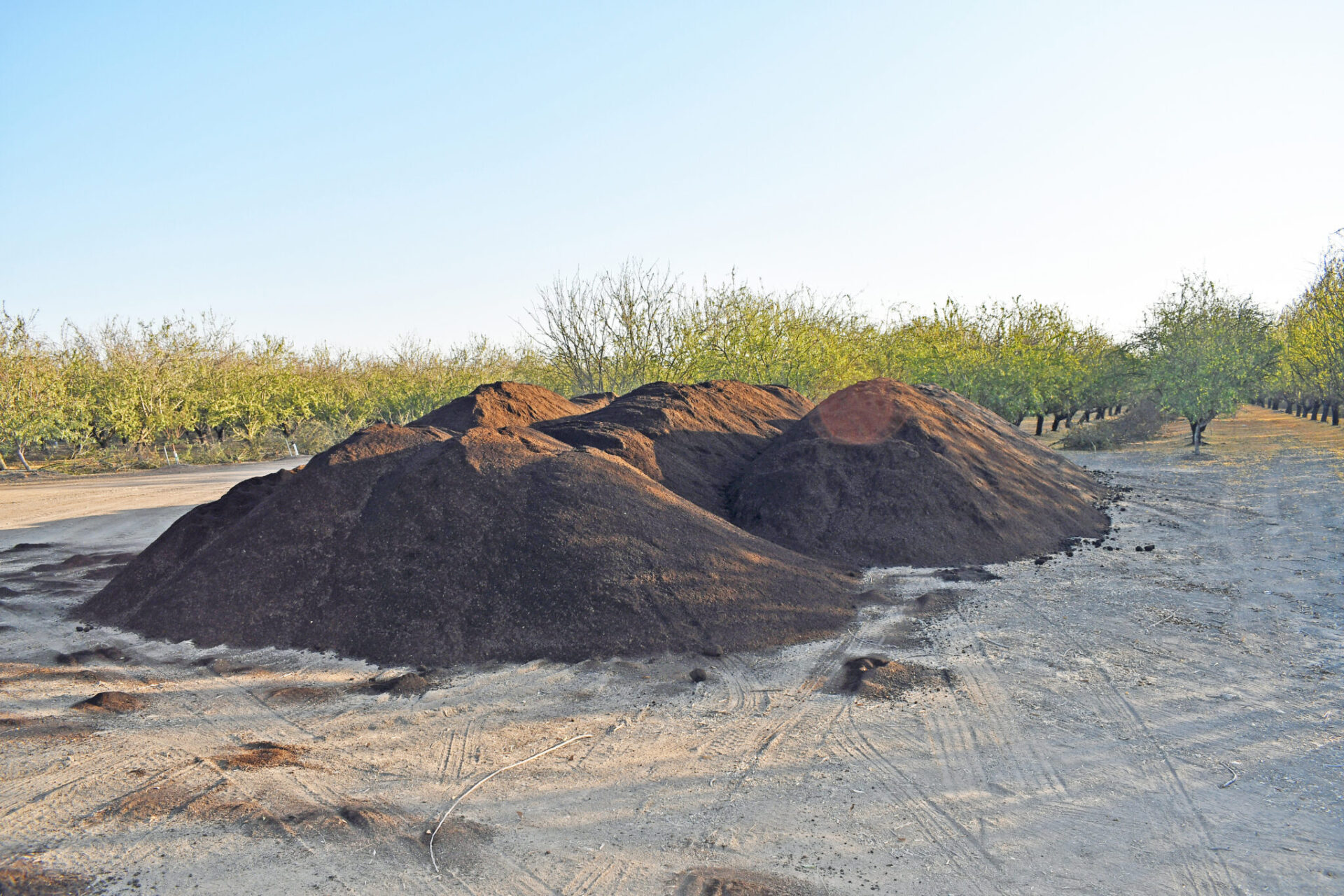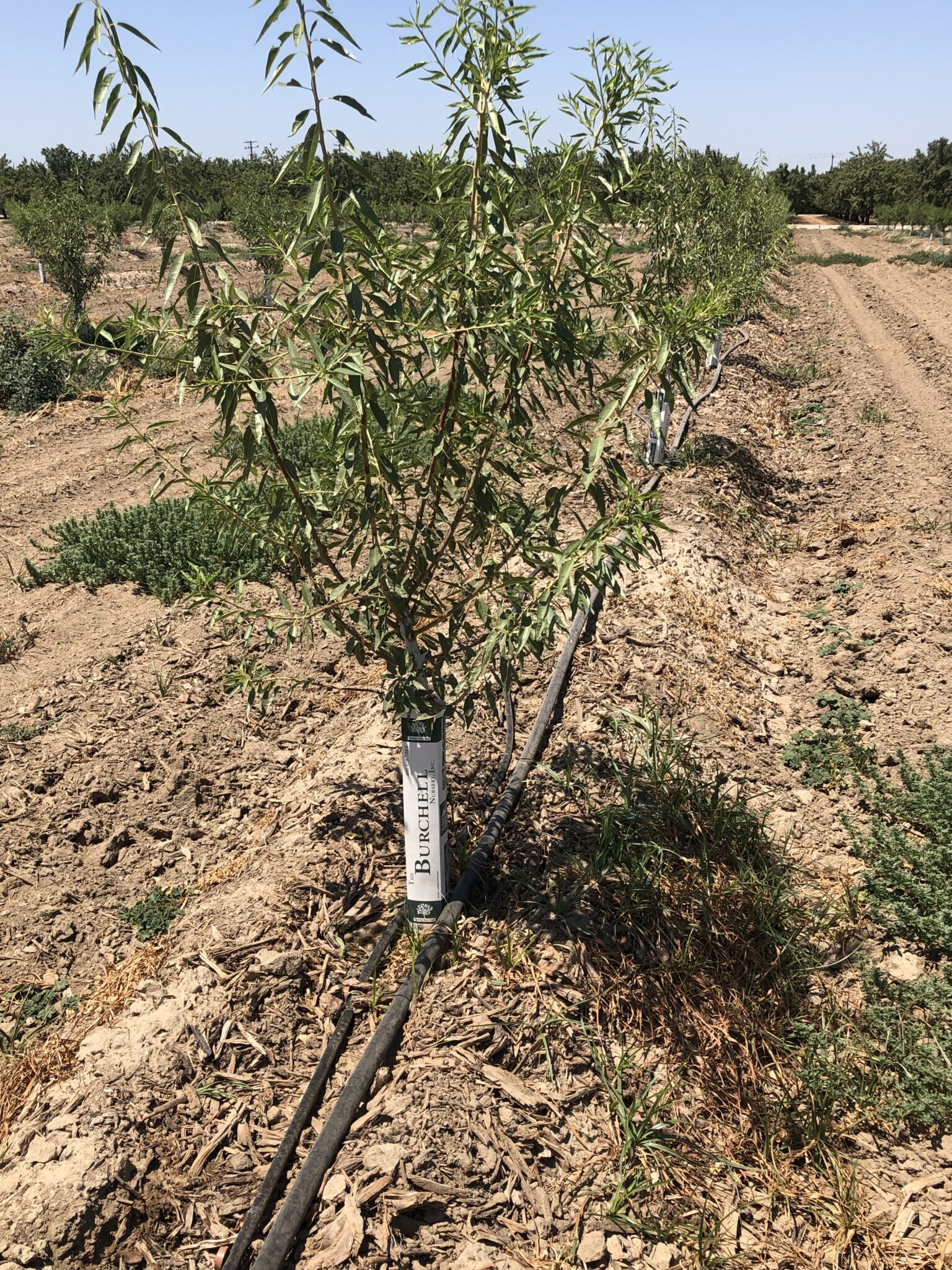
From all indications, by next year, some California almond growers will be getting paid for using cover crops, adding composts or conducting whole orchard recycling.
The development is part of an expansion of private carbon markets into almond production that is being advanced by Ecosystems Services Market Consortium (ESMC) and the Almond Board of California (ABC).
Debbie Reed, executive director of ESMC, said major U.S. food companies that use almonds in their food production have embraced the opportunity to reduce their carbon footprint through purchasing carbon credits from almond growers.
“In terms of interest as a specialty crop, this is probably the highest interest that we have seen to date,” Reed said.
“A lot of companies have figured out that climate change is a real risk to their business, and given that American politics has not been taking care of climate change very much, they are stepping in,” said Gabriele Ludwig, director of sustainability and environmental affairs for ABC. “Many have set voluntary goals, such as to reduce greenhouse gas emissions or water use for their company. And a lot of it is around showing their customers that they are trying, as more and more consumers want the products that they buy to not only be good for them, but also good for the planet and for society.”
To date, the food companies seeking to purchase carbon credits are operating under voluntary programs, Reed said. They are turning to agriculture in part because without doing so, it is difficult to meet internal goals for lowering their carbon footprint, given that a high percentage of the carbon footprint in food production comes from farming. This is where private ecosystem services markets have a role to play.
ESMC currently has a dozen or so pilot projects in the U.S., the biggest of which in terms of acreage are concentrated in the commodity cropping systems in the Midwest. It has been working on developing the almond carbon market since last fall and is set to announce the start of an almond pilot project this spring.
“We are now at the point where we are ready to announce the pilot and start enrolling producers, many of whom will be brought in through the Almond Board,” Reed said. Major food companies that purchase almonds also are expected to contract directly with growers for using cover crops, composting or conducting whole orchard recycling.
Reed advised producers who wish to participate in the carbon market to work through the ABC.
“During the pilot phase, that is how we will operate. Once we get past that, and we are launching our full program in 2022, it will be more of an open process for growers in all of the production systems and regions that we are operating in,” Reed said.
“This is one of those true opportunities that agriculture as a sector can bring to the table. Through markets, we can pay farmers and ranchers for what society is demanding, and thus achieve it at scale,” Reed said.
Market Standards
ESMC started its process to devise a carbon market for large scale food companies and producers who supply them in 2017.
“We started just assessing whether or not we could design a market for agriculture on scale,” Reed said. “Then we started designing our protocols in 2018 and formed as an organization formally in 2019.”
The nonprofit consortium works in both agricultural cropping systems and grazing land systems with livestock.
“Our role is developing the protocols and quantification and verification systems and working with third-party certifiers to ensure that our protocols and our standards and credits meet market standards,” Reed said.
“We have been investing in both tools and technology and better ways to quantify and verify credits across all the systems,” she added. “We also are looking at how we can drop the cost of soil carbon sampling. That is an important part of why markets have not scaled in the past. Currently, and in the past, 75% of the cost in generating credits has gone to verification, largely because of the requirement that somebody go out to the field and confirm that a practice took place. Can we use time- and date-stamped photos? Can we use satellite imagery? Can we use other tools and sensors to track what is happening and imbed that into our tools so that verifiers can have access to it and not necessarily go out to the farm?”
When thinking of carbon markets, many California growers think of the Air Resources Board’s (ARB) carbon offset markets that operate under the state’s Cap and Trade program. “They keep asking when they will get an opportunity to benefit from that program,” Ludwig said. “Unfortunately, as implemented, ARB’s carbon offset program does not work for agriculture because of unworkable provisions.”
According to the Global Warming Solutions Act of 2006, which set in motion California’s cap and trade program, carbon offsets need to meet five criteria: they need to be permanent, quantifiable, additional, enforceable and verifiable.
“ARB defines permanent as 100 years,” Ludwig said, “and there is nothing we do in ag on the sequestration side that is 100 years.”
Ludwig said the industry is considering approaching the ARB to consider additional time frames, taking into account newer science that has emerged since the definitions were put in place. “Anything we do right now to reduce greenhouse gas emissions is actually more valuable than what we do 50 or 100 years from now,” Ludwig said, “because it is right now that we need to lower the greenhouse gases. Even shorter-term reductions help to reduce the rate of climate change, and currently, the (California cap-and-trade) system does not allow that to be valued.”
In the meantime, privately run carbon markets, which are focused on voluntary rather than mandatory reductions, can operate under more reasonable standards of mitigating climate change, Ludwig said, and companies are embracing the opportunity to participate.

Desired Outcomes
While many incentive programs are based on paying for certain practices, companies would like to ensure that they are paying for a desired outcome, such as more carbon stored in the soil, Reed said. To that end, ESMC’s research arm has investigated new ways to measure the carbon sequestration benefits of certain farming practices. Companies like General Mills are using those new tools and measurements to determine how much growers change their carbon footprint when adopting practices such as using cover crops and composting or conducting whole orchard recycling. Prices, which are typically made on a per-ton basis, currently are running between $3/ton and $20/ton, with $20/ton being the industry standard, Reed said.
Whether on a strictly economic basis it is worth $20/ton for an almond grower to adopt whole orchard recycling or use cover crops or composting is a question Reed said she couldn’t answer. But any equation should also include the agronomic benefits gained from the practices, she said.
“I think there is so much to learn in these systems that the better the data we collect and the better we are able to track what is happening over time, we will have a much better handle on the economics of all of this so that we can truly valuate the credits,” she said.
To date, practices that will be eligible for compensation include only practices that are “additional” to existing practices. In other words, if a grower already employs cover crops in his or her system, and has done so for more than three years, he or she won’t be eligible for the credits. Reed noted the ESMC is hoping to alter that policy to some degree.
“One of the things we are advocating for is if cover crops are not a business-as-usual practice in a given geography, then it should count as ‘additional’ because you don’t want to penalize the early adopters that we all learned from,” Reed said. “We are working with the standard-setting bodies and the certifiers to say if there is only a 1% or 3% penetration rate of a certain practice in a given region, don’t we want to try to encourage 50% or 75% adoption, and don’t we want to use the markets to do that?”
Ludwig said she has been asked for years about almond growers getting credits for growing trees, which sequester carbon while growing. Here, she said, the stumbling block is the need for the practices to be “additional,” something above what the grower would normally be doing.
“It comes back to, ‘Well, you are growing trees anyway for your own benefit, so why should society or a company pay you for that?’” Ludwig said.
In the meantime, almond growers will soon have what could be characterized as their first real opportunity to participate in a carbon market. It is an opportunity Reed hopes almond growers embrace.
“All the world’s scientists agree that every sector has to do something to mitigate climate change,” Reed said. “The agriculture sector has great opportunities to actually draw down atmospheric carbon and increase soil carbon. This is one of those true opportunities that agriculture as a sector can bring to the table.”










